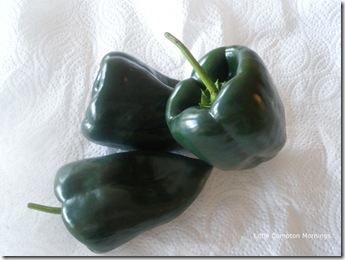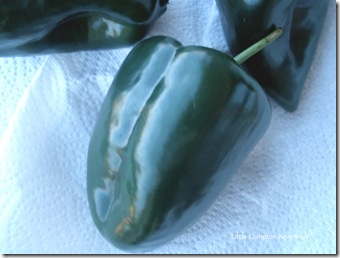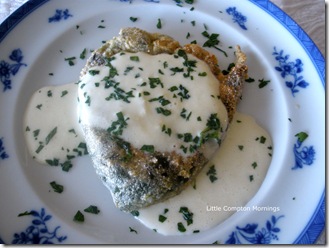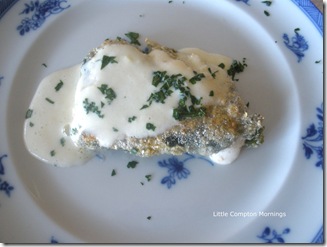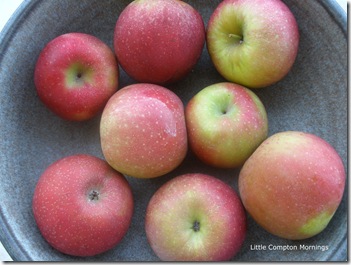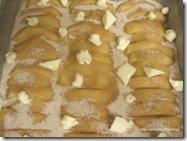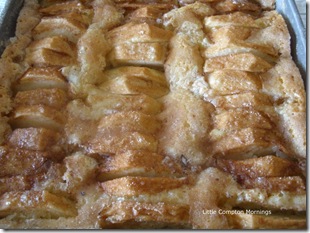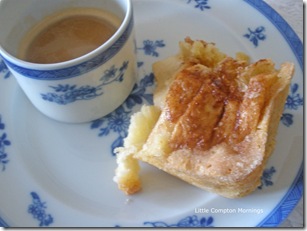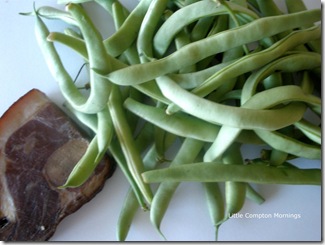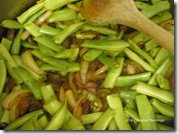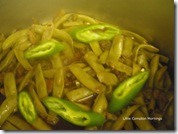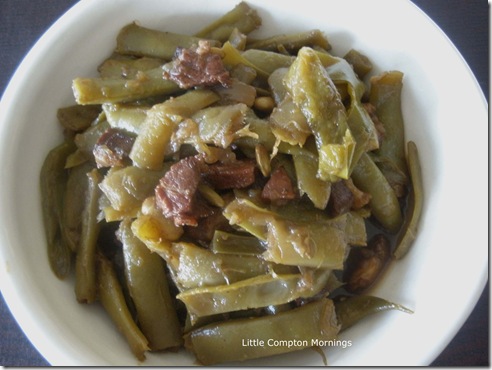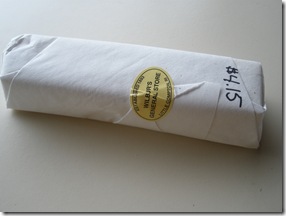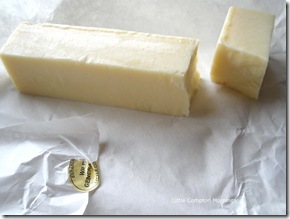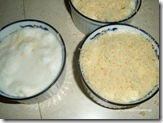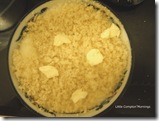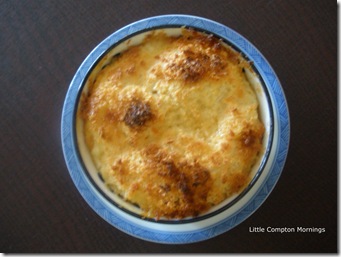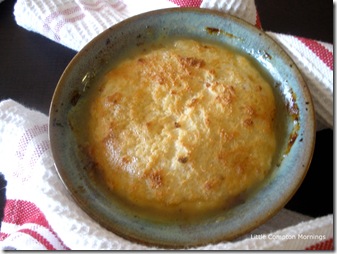There are absolutely gorgeous poblano peppers available now: just the right size—about 4” long and 3” wide at the shoulder--, perfectly conical or heart-shaped, glossy dark green-black. You might not go out looking for them, but they will charm their way into your shopping basket anyway, they are just so fresh-faced and spotless.
And you know that their beauty is more than skin-deep; there’s real substance there. Poblanos are meaty and rich-tasting with a mild-to-moderate flavorful, never raw or grating, heat. They have a medium-thick wall that holds up well when grilled, stuffed, or fried, but that allows them to be at home in gentler preparations, like stir-fries and soups. While I love the small, hotter Serrano for seasoning, the poblano is my idea of the perfect all-around chile pepper. It also is the source of my favorite (and again, the most versatile) dried chile, the ancho, an essential for earthy sauces.
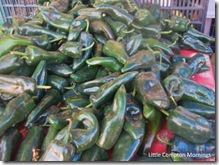 To prepare poblanos, broil or grill them, taking care that they don’t burn, until the skins are lightly charred and blistered all over; I use my toaster oven when doing just a few. Put them in a plastic bag or towel to steam for a few minutes, then pull and rub off the skins, and gently pull out the stem and attached seeds; it can be helpful to do this under running water, and to let the water flow into the chile to remove any escaped seeds. Pat hem dry or set them to drain between paper towels, and then they are ready to use. One of my favorite supper dishes is chiles rellenos, so I tend to make them over and over—and will share my recipe soon. I have already told you about the divine chile-relleno burger. And I often make corn soup with rajas de chile poblano (strips of poblano). But in a pinch I just lightly dust them with cornmeal, fill them with a little cheese, and sauté and serve them with an uncooked fruity and creamy sauce that sets off the heat. It makes a quick appetizer.
To prepare poblanos, broil or grill them, taking care that they don’t burn, until the skins are lightly charred and blistered all over; I use my toaster oven when doing just a few. Put them in a plastic bag or towel to steam for a few minutes, then pull and rub off the skins, and gently pull out the stem and attached seeds; it can be helpful to do this under running water, and to let the water flow into the chile to remove any escaped seeds. Pat hem dry or set them to drain between paper towels, and then they are ready to use. One of my favorite supper dishes is chiles rellenos, so I tend to make them over and over—and will share my recipe soon. I have already told you about the divine chile-relleno burger. And I often make corn soup with rajas de chile poblano (strips of poblano). But in a pinch I just lightly dust them with cornmeal, fill them with a little cheese, and sauté and serve them with an uncooked fruity and creamy sauce that sets off the heat. It makes a quick appetizer.
Poblanos with Pineapple Cream
Use white or yellow cornmeal; I use my jonnycake meal. Serves 4.
4 medium perfect poblano chiles, skins and seeds removed
2 oz firm mozzarella or soft goat cheese
1 large egg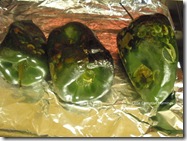
1 tea water
1 tea corn oil
pinch salt
cornmeal
2 T unsalted butter
1 T corn oil
¼ buttermilk
¼ cup light cream or half and half
½ cup fresh ripe pineapple
finely chopped cilantro or parsley
Divide the cheese into 4 portions and insert gently into the chiles. Spread a cup or so of cornmeal on a board or sheet of wax paper. In a shallow dish, beat the egg with the water, oil, and salt. Dip the chiles into the egg mixture, turning, and then coat them with cornmeal. Set aside to dry a little.
In a blender, combine the pineapple, buttermilk, and cream or half and half. Puree till smooth; strain if you wish (I don’t), and refrigerate until needed.
Melt the butter with the oil in a 9” sauté pan. Cook the chiles two at a time, turning once, over medium-high heat until golden and the cheese has melted (keep the first batch warm in a 250 F oven while you cook the second). Serve hot with a little of the cold sauce and some chopped fresh coriander or parsley.
